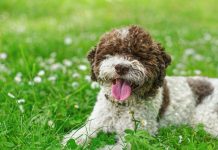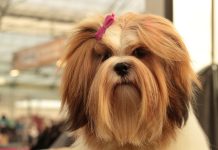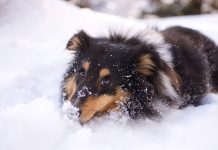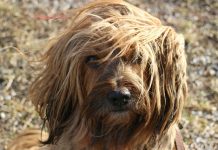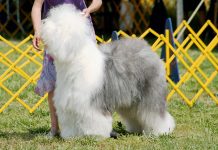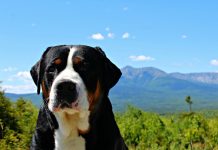History and Origins of the Doberman Pinscher Breed

The Doberman Pinscher is a noble and versatile breed with a fascinating history. Here’s an overview of the breed’s origins:
- Early Development: The Doberman Pinscher was developed in Germany by a tax collector named Karl Friedrich Louis Dobermann in the late 19th century. Dobermann wanted a loyal and protective companion to accompany him on his rounds and provide security.
- Purpose: Dobermann aimed to create a breed that combined strength, intelligence, loyalty, and fearlessness. The resulting Doberman Pinscher was originally used as a guard dog, watchdog, and companion.
- Breed Development: The breed was developed by crossing several dog breeds, including the Rottweiler, German Pinscher, Greyhound, and Weimaraner. The goal was to create a medium-sized dog with a sleek appearance and exceptional working abilities.
- Recognition: The Doberman Pinscher was officially recognized as a breed in the late 19th century. The first Dobermans were exhibited in dog shows in the early 1900s, gaining popularity for their versatility and intelligence.
- War Service: During World War I and World War II, Doberman Pinschers served as military and police dogs, performing tasks such as guarding, messenger duty, and search and rescue.
- Modern Role: Today, the Doberman Pinscher is valued as a loyal family companion, skilled working dog, and competitive show dog. They excel in various canine sports and activities due to their intelligence and athleticism.
Physical Characteristics and Appearance of Doberman Pinschers
The Doberman Pinscher is a medium to large-sized breed known for its sleek and muscular appearance. Here are the key physical characteristics of Dobermans:
- Size: Male Dobermans typically stand between 26 to 28 inches (66 to 71 cm) at the shoulder, while females are slightly smaller at 24 to 26 inches (61 to 66 cm). They weigh between 60 to 80 pounds (27 to 36 kg).
- Muscular Build: Dobermans have a square and compact build with well-developed muscles. They are agile and capable of great speed and endurance.
- Coat: The Doberman’s short coat is smooth and lies close to the body. They have a glossy appearance and come in four primary colors: black, red, blue, and fawn. The coat is low-maintenance and requires minimal grooming.
- Head: The head is wedge-shaped with a long muzzle and strong jaws. The ears are typically cropped to stand erect, giving them a alert and attentive expression. In countries where ear cropping is banned, some Dobermans have natural ears that are medium in size and fold forward.
- Eyes: Dobermans have almond-shaped eyes that are usually dark in color, conveying intelligence and alertness.
- Tail: Traditionally, Dobermans’ tails are docked to a short length. However, in countries where docking is prohibited, they have a natural tail that is set high and carried elegantly.
- Expression: Dobermans have a dignified and noble expression, reflecting their confident and fearless temperament.
- Gait: Dobermans have a smooth and powerful gait, showcasing their athletic abilities. They move with grace and efficiency.
- Temperament: Dobermans are known for their loyalty, intelligence, and protective instincts. They are affectionate with their families but reserved with strangers, making them excellent guard dogs.
Overall, the Doberman Pinscher is a striking and imposing breed with a unique combination of elegance, athleticism, and intelligence. They make devoted companions and excel in various roles, from family protector to working partner. Proper training, socialization, and care are essential for raising a well-rounded Doberman Pinscher.
Doberman Pinscher Temperament and Personality Traits
The Doberman Pinscher is renowned for its intelligence, loyalty, and protective nature. Understanding their temperament and personality traits is essential for providing them with appropriate training and socialization:
- Intelligence: Dobermans are exceptionally intelligent dogs, ranking among the smartest breeds. They are quick learners and excel in obedience training, agility, and other canine sports.
- Loyalty: Dobermans are deeply loyal and devoted to their families. They form strong bonds with their owners and are protective of their loved ones.
- Alertness: Dobermans are naturally alert and vigilant. They make excellent watchdogs and will alert their owners to any suspicious activity or strangers.
- Energetic: Despite their dignified appearance, Dobermans are energetic dogs that require regular exercise and mental stimulation. They enjoy activities like brisk walks, jogging, and interactive play sessions.
- Fearless: Dobermans are known for their bravery and fearlessness. They are not easily intimidated and will protect their families if they sense a threat.
- Affectionate: While Dobermans are protective, they are also affectionate and thrive on companionship. They enjoy spending time with their families and are often gentle with children.
- Trainability: Due to their intelligence and eagerness to please, Dobermans are highly trainable. Positive reinforcement methods work best with this breed, as they respond well to praise and rewards.
- Sensitivity: Dobermans are sensitive dogs that can be responsive to their owner’s emotions. Harsh training methods or lack of attention can have a negative impact on their behavior.
- Socialization: Early and ongoing socialization is crucial for Dobermans. Proper exposure to various people, animals, and environments helps prevent shyness or aggression towards unfamiliar situations.
- Confidence: Dobermans exude confidence and self-assurance. A well-socialized and trained Doberman is calm, composed, and adaptable in different situations.
Training and Socialization Needs for Doberman Pinschers
Proper training and socialization are essential for raising a well-mannered and balanced Doberman Pinscher. Here’s what you need to know about training and socializing your Doberman:
- Early Training: Start training your Doberman puppy as soon as you bring them home. Use positive reinforcement techniques such as treats, praise, and play to motivate and reward desired behaviors.
- Obedience Training: Enroll your Doberman in puppy kindergarten classes and continue with basic obedience training. Dobermans are intelligent and eager to please, making them quick learners.
- Consistent Leadership: Establish yourself as a calm and confident leader in your Doberman’s eyes. Consistent rules, boundaries, and routines will help them feel secure and well-adjusted.
- Socialization: Expose your Doberman to a wide range of people, animals, sights, and sounds from an early age. This helps them develop into confident and well-adjusted adults.
- Exercise Requirements: Dobermans are active dogs that need daily exercise to stay healthy and happy. Aim for at least 60 minutes of physical activity per day, including walks, runs, and interactive playtime.
- Positive Reinforcement: Use positive reinforcement methods to teach and reinforce desired behaviors. Avoid punishment-based techniques, as they can undermine trust and lead to behavioral issues.
- Focus on Manners: Teach your Doberman basic manners such as sitting, staying, and walking nicely on a leash. Consistent training will help them become polite and well-behaved companions.
- Behavioral Challenges: Address any behavioral challenges such as jumping, mouthing, or leash pulling early on. Seek guidance from a professional trainer or behaviorist if needed.
- Structured Activities: Engage your Doberman in mentally stimulating activities such as puzzle toys, scent games, and obedience training sessions to keep their mind sharp and focused.
By providing proper training, socialization, and care, you can help your Doberman Pinscher develop into a well-adjusted and well-behaved companion. Their intelligence, loyalty, and protective instincts make them excellent family dogs and working partners when raised with love and positive guidance.
Health Considerations and Common Issues in Doberman Pinschers
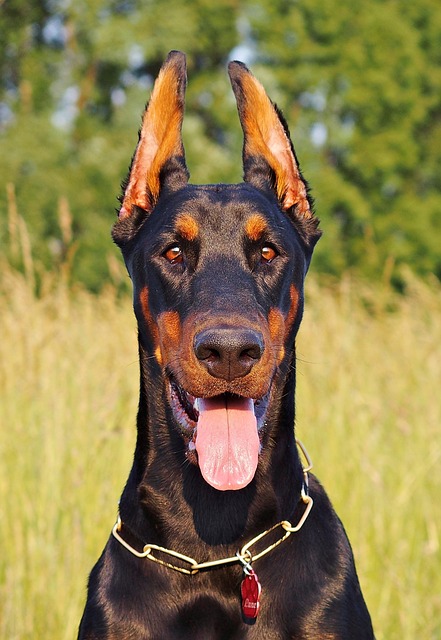
Doberman Pinschers are generally healthy dogs, but like all breeds, they are prone to certain genetic and health issues. Understanding these common conditions can help you provide the best care for your Doberman:
- Dilated Cardiomyopathy (DCM): This is a serious heart condition that affects Dobermans more than other breeds. DCM causes the heart muscles to weaken, leading to heart failure. Regular veterinary check-ups and screening can help detect and manage DCM early.
- Hip Dysplasia: Hip dysplasia is a common orthopedic condition in many large breeds, including Dobermans. It occurs when the hip joint doesn’t develop properly, leading to arthritis and mobility issues. Maintaining a healthy weight and providing joint supplements can help manage hip dysplasia.
- Von Willebrand’s Disease: Dobermans are prone to this inherited bleeding disorder, which affects the blood’s ability to clot properly. It can lead to excessive bleeding from minor injuries or surgeries. Veterinary screening is recommended for breeding Dobermans to reduce the risk of passing on this condition.
- Hypothyroidism: Some Dobermans may develop hypothyroidism, a condition where the thyroid gland doesn’t produce enough hormones. Symptoms include weight gain, lethargy, and skin problems. Treatment involves hormone replacement therapy.
- Wobbler Syndrome: This neurological condition affects the spine and causes weakness, incoordination, and neck pain in Dobermans. Surgical intervention or medical management may be necessary depending on the severity of symptoms.
- Bloat (Gastric Dilatation-Volvulus): Dobermans are at risk of developing bloat, a life-threatening condition where the stomach fills with gas and twists. Immediate veterinary attention is required if bloat is suspected.
- Skin Issues: Dobermans are prone to certain skin conditions such as allergies, dermatitis, and follicular cysts. Regular grooming, appropriate diet, and veterinary care can help manage skin problems.
- Eye Issues: Dobermans may be susceptible to eye disorders such as progressive retinal atrophy (PRA), cataracts, and eyelid abnormalities. Regular eye exams by a veterinary ophthalmologist are recommended.
Living with a Doberman Pinscher: Suitable Environments and Lifestyle Considerations
Doberman Pinschers are active, intelligent, and loyal companions that thrive in a loving home environment. Consider the following factors when living with a Doberman:
- Indoor Living: Dobermans are indoor dogs that form strong bonds with their families. They should not be left alone outside for long periods. Provide a comfortable indoor space where your Doberman can interact with family members.
- Exercise Needs: Dobermans are energetic dogs that require regular exercise to stay healthy and mentally stimulated. Aim for at least 60-90 minutes of exercise per day, which can include brisk walks, jogging, playtime, and obedience training.
- Training and Mental Stimulation: Dobermans thrive on mental challenges and enjoy obedience training, agility, and interactive games. Engage their minds with puzzle toys, scent work, and obedience exercises to prevent boredom.
- Socialization: Early and ongoing socialization is crucial for Doberman Pinschers. Introduce them to various people, animals, and environments to build confidence and prevent behavioral issues.
- Family Interaction: Dobermans are loyal and affectionate dogs that enjoy spending time with their families. They can be good with children when raised together and properly supervised. Teach children how to interact respectfully with the dog.
- Grooming: Dobermans have short coats that are low-maintenance and require regular brushing to remove loose hair. Check ears regularly for signs of infection and trim nails as needed.
- Security Measures: Dobermans are protective by nature and make excellent watchdogs. Provide proper training to distinguish between welcome guests and potential threats.
- Veterinary Care: Schedule regular veterinary check-ups, vaccinations, and preventive care to ensure your Doberman stays healthy and receives prompt treatment for any health issues.
By providing a loving and stimulating environment, regular exercise, proper training, and attentive healthcare, you can create a fulfilling life for your Doberman Pinscher. They are loyal, intelligent, and devoted companions that thrive on companionship and interaction with their families.
Doberman Pinscher Variations and Breeding Practices
Doberman Pinscher Variations
The Doberman Pinscher breed is known for its standard appearance and characteristics, but variations can occur in certain traits based on breeding practices and regional differences. Here are some variations and considerations related to Doberman Pinschers:
- Size Variations: While the standard size for Doberman Pinschers falls within a specific range (26-28 inches for males, 24-26 inches for females), variations in size can occur based on breeding practices. Some breeders may selectively breed for larger or smaller Dobermans, resulting in variations in height and weight.
- Color Variations: The traditional coat colors for Dobermans are black, red, blue, and fawn. However, variations in coat shades and patterns can occur. For example, some Dobermans may exhibit a lighter or darker shade within the standard color range, or they may have slight variations in markings or coat patterns.
- Ear Cropping and Tail Docking: Traditionally, Doberman Pinschers have cropped ears (ears surgically altered to stand erect) and docked tails (tails surgically shortened). However, these practices are becoming less common due to changing preferences and regulations in many countries. As a result, you may encounter Dobermans with natural ears and tails in some regions.
- European vs. American Lines: There are distinctions between European-bred and American-bred Dobermans in terms of appearance and temperament. European lines tend to have a more robust build and a sharper, working-style temperament, while American lines may be slightly taller and have a more streamlined appearance with a focus on show conformation.
- Working vs. Show Lines: Doberman Pinschers bred for working purposes (such as protection work, police K9s, or sport competitions) may exhibit different traits compared to those bred for show purposes. Working lines may have higher energy levels, stronger drives, and a more intense temperament, whereas show lines may prioritize conformation and appearance.
Breeding Practices for Doberman Pinschers
Responsible breeding practices are essential for maintaining the health, temperament, and integrity of the Doberman Pinscher breed. Here are key considerations in Doberman breeding:
- Health Screening: Ethical breeders conduct thorough health screenings on breeding dogs to identify and eliminate genetic health issues. Common health screenings for Dobermans include tests for cardiac health (DCM), hip dysplasia, von Willebrand’s disease, and thyroid function.
- Temperament Assessment: Breeders prioritize breeding dogs with stable and predictable temperaments. Dobermans should exhibit traits such as confidence, intelligence, loyalty, and adaptability.
- Adherence to Breed Standards: Doberman Pinschers have specific breed standards outlined by kennel clubs like the American Kennel Club (AKC) or the Fédération Cynologique Internationale (FCI). These standards specify characteristics such as size, conformation, coat color, and temperament. Responsible breeders strive to produce Dobermans that meet these standards.
- Avoiding Genetic Defects: Ethical breeders work to reduce the risk of passing on genetic defects and hereditary diseases by selecting breeding pairs carefully. They avoid breeding dogs with known health issues or undesirable traits.
- Continued Education and Improvement: Responsible breeders are committed to ongoing education and improvement. They stay updated on the latest research and advancements in dog breeding and prioritize the welfare and betterment of the breed above all else.
- Ethical Placement of Puppies: Ethical breeders carefully screen potential puppy owners and provide support and guidance throughout the puppy’s life. They prioritize the well-being of their puppies and ensure they go to loving and suitable homes.
By following responsible breeding practices, breeders contribute to the health, longevity, and overall well-being of the Doberman Pinscher breed. Potential Doberman owners should seek out reputable breeders who prioritize health, temperament, and adherence to breed standards.
50 Best Names with Meanings for Doberman Pinschers
Naming your Doberman Pinscher is an exciting part of bringing them into your family. Here’s a list of 50 great names along with their meanings that can suit the noble and intelligent nature of Dobermans:
- Atlas – Greek titan who held up the sky, symbolizing strength and endurance.
- Athena – Greek goddess of wisdom and war, representing intelligence and bravery.
- Zeus – King of the gods in Greek mythology, signifying power and authority.
- Luna – Latin for “moon,” symbolizing elegance and mystery.
- Apollo – Greek god of light and music, representing creativity and vitality.
- Rex – Latin for “king,” perfect for a regal and commanding Doberman.
- Nova – Latin for “new,” symbolizing a fresh start with your new companion.
- Juno – Roman goddess of marriage and protection, ideal for a loyal and watchful dog.
- Maximus – Latin for “greatest,” suitable for a strong and impressive Doberman.
- Vega – Brightest star in the constellation Lyra, representing brilliance and prominence.
- Blaze – Referring to a strong and fiery presence, perfect for a spirited Doberman.
- Nyx – Greek goddess of the night, symbolizing mystery and darkness.
- Thor – Norse god of thunder, signifying strength and protection.
- Nova – Latin for “new,” representing a fresh start with your new companion.
- Stella – Latin for “star,” ideal for a Doberman that shines bright.
- Cassius – Latin for “hollow,” evoking strength and resilience.
- Venus – Roman goddess of love and beauty, suitable for an elegant Doberman.
- Hunter – Signifying a strong and agile companion, perfect for an active Doberman.
- Jett – Black gemstone, symbolizing darkness and mystery.
- Rogue – Independent and adventurous, ideal for a spirited Doberman.
- Saber – Referring to a sharp and agile nature, suitable for a vigilant Doberman.
- Ares – Greek god of war, symbolizing courage and strength.
- Zara – Arabic for “princess,” representing elegance and grace.
- Onyx – Black gemstone, signifying power and resilience.
- Jasmine – Flower name, symbolizing beauty and elegance.
- Rex – Latin for “king,” perfect for a commanding and regal Doberman.
- Phoenix – Mythical bird symbolizing rebirth and renewal.
- Jagger – Strong and charismatic, suitable for a confident Doberman.
- Nova – Latin for “new,” representing a fresh start with your new companion.
- Sparta – Ancient Greek city-state known for its warrior culture, symbolizing strength and bravery.
- Zephyr – Greek god of the west wind, representing a gentle and free spirit.
- Loki – Norse trickster god, perfect for a playful and mischievous Doberman.
- Raven – Black bird associated with mystery and intelligence.
- Blitz – Referring to a sudden and powerful attack, suitable for an energetic Doberman.
- Vera – Latin for “truth,” ideal for a loyal and honest companion.
- Kai – Hawaiian for “sea,” symbolizing strength and resilience.
- Sable – Referring to a black fur coat, perfect for a sleek Doberman.
- Juno – Roman goddess of marriage and protection, ideal for a watchful and loyal dog.
- Jett – Black gemstone, symbolizing darkness and mystery.
- Luna – Latin for “moon,” representing elegance and mystique.
- Blaze – Referring to a strong and fiery presence, suitable for a spirited Doberman.
- Zara – Arabic for “princess,” representing elegance and grace.
- Koda – Native American for “friend,” ideal for a loyal and devoted companion.
- Vega – Brightest star in the constellation Lyra, symbolizing brilliance and prominence.
- Rogue – Independent and adventurous, suitable for a spirited Doberman.
- Kai – Hawaiian for “sea,” representing strength and resilience.
- Cleo – Short for Cleopatra, meaning “glory of the father.”
- Loki – Norse trickster god, perfect for a playful and mischievous Doberman.
- Sasha – Russian for “defender of mankind,” ideal for a protective Doberman.
- Delta – Symbolizing change and transformation, suitable for an adaptable Doberman.
Choose a name that resonates with your Doberman’s personality, appearance, and the qualities you admire. Whether you prefer a strong and commanding name or a subtle and elegant name, there’s a perfect fit waiting for your new Doberman companion.
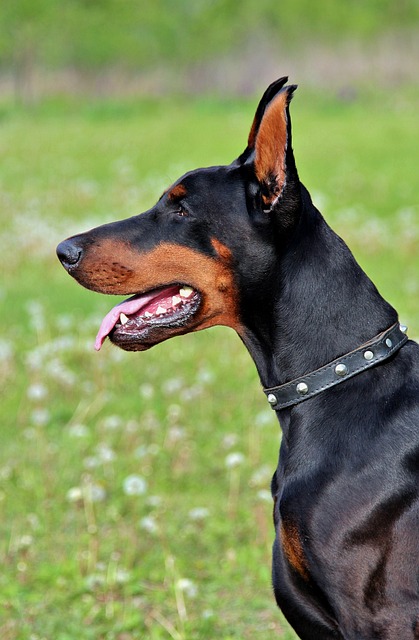
In conclusion, this comprehensive guide to Doberman Pinscher dogs has provided a detailed exploration of this remarkable and versatile breed. Throughout our discussion, we’ve delved into the history, distinctive characteristics, and essential care considerations that define Doberman Pinschers. Known for their intelligence, loyalty, and protective nature, Dobermans make excellent companions and guardians for experienced dog owners. They excel in various roles, including obedience, protection work, and as loving family pets. As you embark on your journey with a Doberman Pinscher, may you appreciate their unique qualities and form a strong bond with this impressive breed, creating lasting companionship and fulfillment together.











